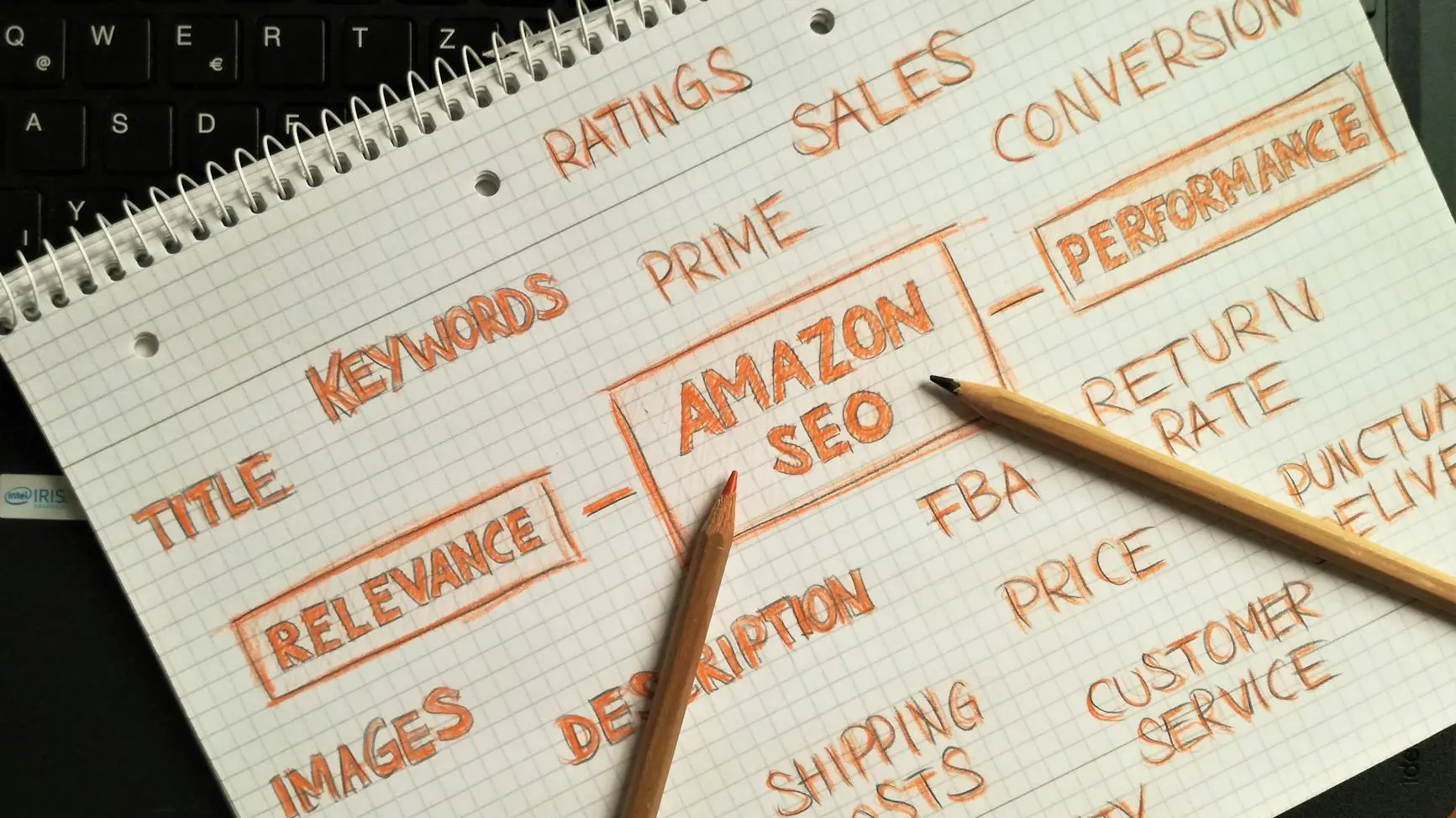The Roadmap to Success: Navigating SEO Best Practices for Small Businesses

Understanding SEO Best Practices
To navigate the world of search engine optimization (SEO), it's essential for small businesses to understand the importance of SEO and how it works. By implementing effective SEO strategies, small businesses can improve their online visibility, attract targeted traffic, and increase brand awareness.
Importance of SEO for Small Businesses
SEO is vital for small businesses as it allows them to compete with larger competitors on a level playing field. It helps level the playing field by improving online visibility and organic search rankings, enabling small businesses to target specific keywords and reach their target audience effectively. When a website appears on the first page of search results, it signals to users that the business is reputable and trustworthy, helping to build credibility and trust with the target audience.
Implementing SEO best practices also provides long-term benefits for small businesses. It is not a one-time task but an ongoing process that requires consistent effort and optimization. By maintaining their online presence and staying competitive in the digital landscape, small businesses can continue to drive organic traffic and grow their customer base.
How SEO Works
SEO works by optimizing various elements of a website, including content, keywords, and backlinks, to improve its visibility and ranking in search engine results pages (SERPs). It involves both on-page and off-page optimization techniques. On-page SEO focuses on optimizing individual web pages to make them more relevant to search queries and user intent. This includes optimizing content, meta tags, headings, and internal linking.
Off-page SEO, on the other hand, involves activities performed outside of the website to improve its online reputation and authority. This includes building high-quality backlinks from relevant and reputable websites, as well as social media marketing and online reputation management.
By implementing a comprehensive SEO strategy that combines on-page and off-page optimization, small businesses can increase their chances of ranking higher in search engine results. This, in turn, drives more organic traffic to their website, leading to increased visibility, conversions, and business growth.
Understanding the importance of SEO and how it works provides small businesses with a roadmap to success in the digital landscape. By leveraging SEO best practices, small businesses can harness the power of search engines to reach their target audience effectively and achieve their business goals.
Building Quality Backlinks
In the world of SEO, building quality backlinks is a crucial aspect of improving your website's visibility and search engine rankings. Backlinks are links on other websites that point to your website, serving as votes of credibility from other sites. The more high-quality backlinks you have, the higher your website is likely to rank in search results.
The Role of Backlinks in SEO
Backlinks play a vital role in search engine optimization (SEO). They help search engines discover and index content, and they serve as a ranking signal to determine the prominence of a web page in search results. When reputable websites link to your content, search engines view it as a sign of credibility and relevance.
Differentiating Good and Bad Backlinks
Not all backlinks are created equal. It's essential to differentiate between good and bad backlinks to ensure you're building a high-quality backlink profile. Good backlinks come from trusted sources that are relevant to your organization and result from the quality of your content. On the other hand, bad backlinks can come from paid link schemes or spam behaviors.
To build a strong backlink profile, focus on acquiring backlinks from reputable websites within your industry or niche. These backlinks should be earned naturally through the quality and relevance of your content. Avoid engaging in paid link schemes or acquiring backlinks from low-quality or spammy websites, as they can harm your SEO efforts.
Utilizing Competitor Backlinks
Analyzing the backlink profiles of your competitors can provide valuable insights and identify link building opportunities. By understanding which websites are linking to your competitors, you can explore the possibility of acquiring backlinks from similar sources. This strategy can help you build a network of relevant and authoritative backlinks that contribute to your website's SEO success.
To utilize competitor backlinks effectively, employ SEO tools that allow you to analyze and monitor backlinks. These tools can provide information about the websites linking to your competitors, enabling you to identify potential linking opportunities. By reaching out to these websites and showcasing the value of your content, you can increase your chances of acquiring high-quality backlinks.
Building quality backlinks is an ongoing process that requires time and effort. It's crucial to focus on creating valuable content that naturally attracts backlinks from reputable sources. By following ethical link building practices and leveraging competitor backlinks, you can strengthen your website's authority, improve search engine rankings, and increase organic traffic to your site.
On-Page SEO Techniques
To enhance your website's visibility and improve its search engine rankings, implementing effective on-page SEO techniques is essential. This section will explore several key strategies, including optimizing for search intent, utilizing important on-page elements, emphasizing high-quality content, and maximizing title tags.
Optimizing for Search Intent
Optimizing your webpages for search intent is a crucial aspect of on-page SEO. Search intent refers to the reason behind a user's search query and the type of information they are seeking. By aligning your content with the user's search intent, you increase the likelihood of attracting relevant traffic and satisfying their needs.
Start by performing thorough SEO keyword research to identify relevant topics and target keywords that align with your business and customers. Then, create high-quality content that provides valuable information and addresses the specific needs of your target audience. By understanding and catering to search intent, you can enhance your website's visibility and attract more organic traffic.
Elements of On-Page SEO
On-page SEO encompasses various elements that contribute to the overall optimization of your webpages. Some key elements to consider include:
-
URL Structure: Ensure your URLs are concise, descriptive, and contain relevant keywords. This makes it easier for search engines and users to understand the content of your pages.
-
Meta Tags: Optimize your meta tags, including the meta title and meta description, with relevant keywords and compelling copy. These tags appear in search engine results and influence click-through rates.
-
Heading Tags: Use heading tags (H1, H2, etc.) to structure your content and improve readability. Incorporate relevant keywords within your headings to signal the topic of your page to search engines.
-
Internal Links: Incorporate internal links within your content to establish a logical website structure and guide users to relevant pages. Internal linking can improve user experience and help search engines understand the relationships between your webpages.
For a comprehensive guide on SEO content writing and SEO website optimization, explore our other articles dedicated to these topics.
Importance of High-Quality Content
Creating high-quality content is a fundamental aspect of on-page SEO. In recent years, search engines, including Google, have placed increasing importance on user experience when ranking webpages. Providing valuable, informative, and engaging content that meets your audience's needs is key to attracting and retaining visitors.
To create high-quality content, start by conducting thorough research on your chosen topic and incorporating relevant keywords. Craft well-structured, easy-to-read content that addresses common questions or pain points within your industry. Incorporating multimedia elements such as images, videos, and infographics can also enhance the user experience and make your content more shareable.
Remember, quality content not only appeals to users but also increases the likelihood of obtaining backlinks from authoritative websites. This helps to improve your website's credibility and visibility in search engine rankings.
Maximizing Title Tags
Title tags are HTML elements that indicate the title of a webpage. They are displayed in search engine results, social media posts, and browser tabs. Writing keyword-rich title tags is crucial for on-page SEO as they provide search engines with a clear understanding of the content of your page.
To maximize the impact of your title tags, consider the following tips:
-
Include Target Keywords: Incorporate relevant keywords that accurately reflect the content of your page. This helps search engines match your page with relevant search queries.
-
Keep Titles Concise: Aim for title tags that are around 50-60 characters in length. This ensures that your titles are fully displayed in search engine results, improving click-through rates.
-
Create Engaging Titles: Craft compelling and click-worthy titles that entice users to click on your page. Consider incorporating power words, numbers, or actionable language to grab attention.
By optimizing your title tags, you can improve your website's visibility in search engine results and increase the likelihood of attracting organic traffic.
By implementing these on-page SEO techniques, you can enhance your website's visibility, attract more targeted traffic, and improve your overall search engine rankings. Remember to monitor and analyze the performance of your pages regularly, making adjustments and improvements based on user feedback and search engine algorithms.
The Impact of Page Speed on SEO
In the realm of SEO, page speed plays a crucial role in determining a website's success. It directly affects various aspects, including search engine rankings, user experience, and conversion rates. Understanding why page speed matters, how to measure it, and methods to improve website load time are essential for small businesses looking to optimize their SEO efforts.
Why Page Speed Matters
Page speed is a critical factor that influences multiple aspects of a website's performance. Fast-loading webpages are essential for improving search engine rankings, user experience, and conversion rates. Search engines, such as Google, prioritize websites with faster loading speeds 1.
When a website loads slowly, users are more likely to become frustrated and abandon the page, resulting in higher bounce rates. Slow-loading websites are less likely to rank high in search engine results, as search engines prefer to promote websites that provide a better user experience.
Measuring Page Speed
Page speed is measured using several metrics, such as time to first byte (TTFB), time to interactive (TTI), first contentful paint (FCP), and overall load time. These measurements help assess the speed and performance of a website.
An ideal loading time for a webpage is 2 seconds or less. However, the loading time can vary depending on the type of page and the measured elements, such as TTI and FCP.
Improving Website Load Time
To enhance page speed and optimize the website's performance, small businesses can implement various strategies:
- Optimize Images: Compressing and resizing images can significantly reduce file sizes and improve load times. Consider using image optimization tools or plugins to streamline this process.
- Minimize HTTP Requests: Reduce the number of requests made to the server by minimizing the use of unnecessary scripts, stylesheets, and external resources.
- Enable Browser Caching: Leverage browser caching to store static elements of your website, such as images and CSS files, on visitors' devices. This reduces the need to fetch these resources repeatedly, improving load times.
- Utilize Content Delivery Networks (CDNs): CDNs distribute website content across multiple servers worldwide, allowing users to access data from a server that is geographically closer to them. This reduces latency and improves load times.
- Optimize Code: Minify CSS and JavaScript files by removing unnecessary characters, spaces, and comments. This reduces file sizes and improves load times.
- Upgrade Web Hosting: Choose a reliable and fast web hosting provider that can handle your website's traffic and ensure optimal performance.
By implementing these strategies, small businesses can improve their website's load time, enhance user experience, and boost their SEO rankings.
In conclusion, page speed is a critical factor in SEO. It directly impacts search engine rankings, user experience, and conversion rates. By understanding the importance of page speed, measuring it accurately, and implementing strategies to improve website load time, small businesses can enhance their online presence and achieve SEO success.
The Significance of Mobile Optimization
In today's digital landscape, mobile optimization plays a crucial role in improving SEO rankings and enhancing the overall success of small businesses with websites. Understanding the importance of mobile internet usage, implementing responsive design for mobile, and optimizing page speed for mobile devices are key factors to consider.
Importance of Mobile Internet Usage
Mobile internet usage has skyrocketed in recent years, with more and more people relying on smartphones and tablets to access the internet. In fact, Google introduced the mobile-first index in 2015, prioritizing mobile-friendly websites in search results, even for desktop users. This shift in search engine algorithms emphasizes the need for small businesses to optimize their websites for mobile devices.
Responsive Design for Mobile
One of the critical aspects of mobile optimization is implementing responsive design. Responsive design allows websites to adapt automatically to different screen sizes, ensuring content readability, image sizing, and simplified navigation. With responsive design, your website can provide an optimal user experience across various devices, including smartphones, tablets, and desktops 2.
By utilizing responsive design, your website can dynamically adjust its layout and elements to fit any screen size. This adaptability ensures that users can easily navigate through your site, access important information, and interact with your content. A positive user experience on mobile devices is essential for improving SEO rankings and increasing user engagement.
Page Speed and Mobile Optimization
Page speed is a crucial factor in mobile optimization and SEO rankings. Slow loading times on mobile devices can lead to increased bounce rates and negatively impact your website's visibility in search engine results. To optimize page speed, it's important to identify and address any speed issues. Tools like Google PageSpeed Insights can help analyze your website's performance and provide recommendations for improvement.
Improving website load time involves various techniques such as optimizing images, minimizing HTTP requests, and leveraging browser caching. By reducing the load time of your website on mobile devices, you can enhance the user experience, decrease bounce rates, and improve your SEO rankings.
Mobile users have distinct needs and preferences compared to desktop users. To cater to mobile users effectively, small businesses should focus on creating easily readable and navigable content on smaller screens. This includes using concise paragraphs, utilizing bullet points, employing clear headings, and prominently displaying important information like contact details and calls-to-action. By optimizing your website for mobile devices, you can enhance the user experience and increase engagement, ultimately leading to more conversions and business success.
In summary, mobile optimization is a vital component of SEO best practices for small businesses. By recognizing the importance of mobile internet usage, implementing responsive design, optimizing page speed, and tailoring content to mobile users, businesses can improve their SEO rankings, provide a better user experience, and achieve greater success in the digital landscape.
References
Footnotes

Senior Developer


